To determine which NHL clubs are in the best shape for the next three seasons, we had our panel of experts (Emily Kaplan, Chris Peters and Greg Wyshynski) rate each team in four categories -- roster; prospects; cap situation and contracts; and front office, ownership and coaching -- using this scale:
100: A+ (Elite)
90: A (Great)
80: B (Very good)
70: C (Average)
60: D (Very Bad)
50: F (Disastrous)
40: F- (The worst thing imaginable)
After averaging the results from the panelists, each of the four categories was weighted to create the overall score: roster (35 percent), prospects (25 percent), cap/contracts (20 percent) and owner/GM/coach (20 percent). The result is a comprehensive ranking based on how well each team is positioned for the future.
Read through the entire file from No. 1 to No. 31, or jump ahead to your team by using the quick links below:
Jump to a team:
ANA | ARI | BOS | BUF | CGY | CAR | CHI
COL | CBJ | DAL | DET | EDM | FLA
LA | MIN | MTL | NSH | NJ | NYI
NYR | OTT | PHI | PIT | SJ | STL
TB | TOR | VAN | VGS | WSH | WPG

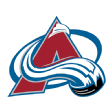
1. Colorado Avalanche
Overall score: 87.8
Why they're here: Everyone in the NHL is talking about the Avalanche these days. They are loaded enough to win now, and their best players are young and cheap; case in point is Nathan MacKinnon, a top-three player in the league, playing on a ridiculous bargain at $6.3 million through 2023. Eventually, these guys will need new contracts, and that will test GM Joe Sakic's discipline. -- Kaplan
Points of concern: About the only point of concern for the Avalanche at this point is whether they'll meet the expectations that have been placed on them. Because otherwise, they have a young core that's the envy of the league, and a salary cap outlook for the next three seasons that is equally enviable. Coach Jared Bednar and GM Joe Sakic have rightfully earned their admiration with the group they've constructed -- now let's see what it does on the ice. -- Wyshynski
Cornerstone prospects: The Avs' blue line may be set for the next decade if Cale Makar and Bowen Byram reach their ceilings. Both are among the top defense prospects in the game, with Makar looking like one of the best such prospects in the past several years based on his development. Both have offensive talent and can really skate. Makar is a right shot; Byram is a left shot. Could this be the top pairing of the future for Colorado? If it is, that's going to be a great benefit to the team's forwards -- and of great detriment to the rest of the Central Division. -- Peters

2. Tampa Bay Lightning
Overall score: 87.7
Why they're here: The Lightning set a standard for excellence under GM Steve Yzerman (now with the Red Wings), and we're assuming they won't miss a beat with longtime assistant GM Julien BriseBois taking over. Not only have the Lightning drafted and developed well, they have 26-and-under stars Nikita Kucherov and Andrei Vasilevskiy signed through 2027 and 2028, respectively. They'll look even better once Brayden Point signs a long-term deal, too. -- Kaplan
Points of concern: The Lightning don't have the deepest prospect pool, especially when it comes to top-end young talent. Considering how locked in their core is for the next three seasons, they'd probably prefer to have a few of them for cheap labor down the lineup. Many of these stars have envious cap numbers -- thanks, Florida tax laws! -- but their trade protection leaves GM Julien BriseBois with little flexibility should he require it. But having several dynamic offensive players in their prime, two No. 1 defensemen and a Vezina-winning goalie all inked through 2024 is worth that hassle. -- Wyshynski
Cornerstone prospects: The Lightning have leaned heavily on drafting and developing talent, but are at the stage now where most everyone who is going to impact their Stanley Cup window is on their roster. The team watched yet another undrafted breakout performer rise in their system with Alex Barre-Boulet's emergence for AHL Syracuse. Others also grew into bigger roles in the minors, like Cal Foote and Carter Verhaege. Still, I don't see any players in this group who are going to make a substantial enough impact on a roster that's already among the league's best for this year and into the near future. -- Peters
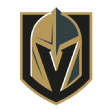
3. Vegas Golden Knights
Overall score: 84.1
Why they're here: It happened fast, but the Golden Knights transformed from expansion team looking to build slowly to a group already contending for championships. While they have a mostly veteran roster with plenty of long-term contracts, there are some good youngsters locked in at reasonable rates (24-year-old Shea Theodore at $5.2 million through 2025 could be a steal). -- Kaplan
Points of concern: Please take note, Seattle: A team that started with nothing is now the third-best team in our future power rankings. But also note this, Seattle: In year three, the Golden Knights would have $23.7 million in cap space under the current ceiling with just 10 players under contract, with Mark Stone ($9.5 million), Marc-Andre Fleury and Max Pacioretty ($7 million each) gobbling up a chunk of it. Cap management is an issue, but few other things are for the sweet Golden Knights. -- Wyshynski
Cornerstone prospects: Cody Glass is at the center of a young group that has more depth than it should based on the time the expansion team has had to build a prospect system. Glass has top-six center potential as a very gifted playmaker. Meanwhile, the team has been investing in in-house development at the AHL level, and that looks like it's paying off for Nicolas Hague, Dylan Coghlan and Zach Whitecloud, all defensemen with potential to make an NHL impact within the next few seasons. The team also drafted a very strong prospect in Peyton Krebs, who is recovering from an Achilles tendon injury. If he comes back as strong as he was and continues on his development trend, that's another potential franchise building block. -- Peters
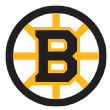
4. Boston Bruins
Overall score: 83.1
Why they're here: Boston's roster features some of the best top-end bargains in the league: Brad Marchand and David Pastrnak are both in the middle of long-term deals with cap hits under $7 million per year. This is a team where players take slightly less, because they like the camaraderie. If the front office can convince defenseman Torey Krug to do the same this summer -- it's likely -- they're poised for sustained success. -- Kaplan
Points of concern: Patrice Bergeron, Brad Marchand, David Krejci and Tuukka Rask are all over 30 and Zdeno Chara is 42. That's the heart of what's been a very good Bruins team, and one that could repeat as Eastern Conference champions this season. But down the line, Boston has a weak pool of high-end prospects behind the young standouts that are already on the roster like David Pastrnak (23) and Charlie McAvoy (21). Whether that's a concern in the next three seasons depends greatly on how this core plays during that stretch. -- Wyshynski
Cornerstone prospects: The prospect system is a real area of weakness for the Bruins, as they've had mostly late draft picks in recent seasons. At the core of the system, however, are the speedy Jack Studnicka and John Beecher. Those two players play the way the game is going -- fast. It's an area where the Bruins could steadily improve to become even tougher to play against than they already are. There just isn't a lot of depth here, however, especially on defense, where the team will soon need to replace Zdeno Chara. -- Peters
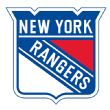
5. New York Rangers
Overall score: 83.0
Why they're here: The Rangers are now the model example for how to tear it down and built it right back up, as fast as possible. New York has hoarded draft picks and top prospects, so the Rangers are well-positioned for the future. They would like to win one while Henrik Lundqvist (now 37) is still in net, and it now seems possible after the additions of Kaapo Kakko, Artemi Panarin and Jacob Trouba this summer. -- Kaplan
Points of concern: The present isn't the point for the Rangers, who are expected to spend another year in their rebuild as the team's collection of standout prospects continue to grow. Next summer, they'll have 14 players under contract and currently have just over $16 million with which to work, along with some buyout options possible. Few teams have recalibrated their rosters as quickly as the Rangers have with their combination of prospect acquisitions and big free-agent swings (Artemi Panarin, Jacob Trouba). Now it has to look as good on the ice as it does in the crystal ball. -- Wyshynski
Cornerstone prospects: The top prospect system in the NHL has both high-end players and tremendous depth. The one thing this system lacks is a long-term elite center, but they're set just about everywhere else. Kaapo Kakko is the franchise-changing prospect with his skill and ability to take over games. But there's a lot to look forward to with Vitali Kravtsov, also on the wing. The defense is particularly strong, led by the rising K'Andre Miller, but with a number of players who can also help. Lastly, the Rangers have a blue-chip goalie prospect in Igor Shesterkin, who has had a lot of success at the KHL level. -- Peters
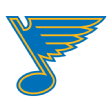
6. St. Louis Blues
Overall score: 82.1
Why they're here: Strapped by the cap, like so many Stanley Cup winners, the Blues have to do some finagling with big contracts expiring next summer (among the UFAs: Brayden Schenn, captain Alex Pietrangelo and Joel Edmunson). There's a lot of confidence these days in coach Craig Berube and GM Doug Armstrong. That's the perk of a Stanley Cup win. Next, they'll have to prove they can sustain that success. -- Kaplan
Points of concern: The Blues aren't necessarily going to be a one-and-done team, what with a Stanley Cup-caliber core that has 15 players inked through the next two seasons. But there are some cap considerations, such as four defensemen (including captain Alex Pietrangelo) hitting free agency next summer and both of their goalies hitting unrestricted free agency in 2021. -- Wyshynski
Cornerstone prospects: The Blues still have some nice pieces in their system after graduating Robert Thomas and winning the Stanley Cup last year. This is another system where it's harder to find long-term star players, but Jordan Kyrou has the best potential to be a top-six impact player. That's especially true after an OHL MVP season in 2017-18 and an excellent showing as an AHL rookie in 2018-19. Forwards Dominik Bokk and Klim Kostin are another two who might be able to round out their games and make a larger impact at the NHL level depending on how their development goes. -- Peters
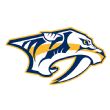
7. Nashville Predators
Overall score: 81.7
Why they're here: GM David Poile has led a good draft-and-develop model. He's been known to shake things up when they go stale -- as he did this offseason -- so it's hard to project what this team might look like in a few years. The Preds are banking that Matt Duchene is the long-term answer as their No. 2 center. -- Kaplan
Points of concern: With the addition of Matt Duchene to team with outstanding goaltending, a stellar blue line and arguably the best top line in the league, the Predators are primed for a run at the Stanley Cup for the next three seasons -- especially when you consider their deft cap management, although Roman Josi needs a new deal before next summer. It's a team that'll still be in its prime three seasons from now, which is key given that the prospect pool is middling. Although, if Eeli Tolvanen becomes what we all projected him to be, that rating could rise, too. -- Wyshynski
Cornerstone prospects: Eeli Tolvanen and Dante Fabbro look like potential long-term impact players for the team, though Tolvanen needs to bounce back from an underwhelming draft-plus-two season in the AHL. The team also deepened its prospect pool with the additions of Philip Tomasino and Egor Afanasyev in the last draft. Tolvanen and Fabbro are the blue-chip pieces, however, as the former can be an elite goal scorer when he's on his game, and Fabbro may one day make one of the Preds' more veteran defensemen expendable in trade. -- Peters
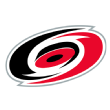
8. Carolina Hurricanes
Overall score: 81.4
Why they're here: After years of being everybody's favorite sleeper team, the Hurricanes have finally arrived. Owner Tom Dundon's stinginess keeps the salary cap at bay; it helps that 22-year-old Sebastian Aho ($8.45 million cap hit), 24-year-old Teuvo Teravainen ($5.4 million) and 24-year-old Brett Pesce ($4.025 million) are all on team-friendly long-term deals. -- Kaplan
Points of concern: The Hurricanes continue to build a contending team built on a sturdy foundation of strong defensemen, smartly compensated forwards and ... well, the goaltending is the goaltending. Investment in the analytics-driven front office finally paid dividends last season, but our experts aren't completely convinced about the managerial team that includes second-year coach Rod Brind'Amour. -- Wyshynski
Cornerstone prospects: There is strength in numbers for the Hurricanes beneath their NHL roster. This is a prospect system with incredible depth on top of having one of the very best young prospects in the game in Martin Necas. He could be a centerpiece of their team alongside Sebastian Aho for the foreseeable future. Beyond Necas, there's a bit of a drop in terms of talent, but recent first-rounder Ryan Suzuki has a high ceiling as a skilled center. The Canes should also see players start to contribute at the NHL level from their recent Calder Cup champion farm team, the Charlotte Checkers. -- Peters
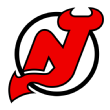
9. New Jersey Devils
Overall score: 80.9
Why they're here: The complexion of the Devils changed drastically after they won the 2019 draft lottery -- and the right to select franchise cornerstone Jack Hughes. New Jersey expedited its rebuild, acquiring veterans like P.K. Subban and Wayne Simmonds to supplement the returning Taylor Hall. The Devils are still young and raw, and will need to use up a chunk of cap space to sign Hall to a long-term deal (if he wants to stay). -- Kaplan
Points of concern: The future of the Devils is clouded by the future of Taylor Hall. He's an unrestricted free agent next summer who will command a fortune. The good news is that the Devils have the cap flexibility to afford him. The bad news is that no one's certain that Hall will be a Devil after this season, even with the additions of Jack Hughes and P.K. Subban this summer. Other contractual concerns: Nico Hischier's next contract, and the fact that Cory Schneider has three more seasons on his at $6 million annually. -- Wyshynski
Cornerstone prospects: It's all about 2019 No. 1 pick Jack Hughes. He's the centerpiece of this team's future and can make a long-term impact both on and off the ice for the Devils as a marketable star. After Hughes, the team also has a potential top-four defenseman in Ty Smith who has some dynamic offensive talent. We're also going to learn a lot more about goalie Mackenzie Blackwood's potential for playing a bigger role this season. -- Peters
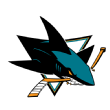
10. San Jose Sharks
Overall score: 80.5
Why they're here: This franchise is hellbent on winning its first Stanley Cup, and they know their best chance is now. They are putting a lot of stock in Erik Karlsson and hope he can stay healthy. GM Doug Wilson has made some smart signings, which keep this team afloat among treacherous cap waters. -- Kaplan
Points of concern: The Sharks are blessed with one of the best managerial groups in the NHL, with GM Doug Wilson, coach Peter DeBoer and an owner in Hasso Plattner who is willing to pay any price for success. What they don't have are high-end prospects in their system as a "next wave" behind players like Tomas Hertl and Timo Meier, who themselves were the "next wave" behind Logan Couture and Marc-Edouard Vlasic. They've also sacrificed some draft picks over the next two seasons in acquiring players like Erik Karlsson. -- Wyshynski
Cornerstone prospects: The Sharks don't seem to misfire too often at the draft. Even if they don't get a star, they get a player who can fill a role. It's more of the latter currently, as I don't see any star players in this group without some massive development swings. However, what the Sharks do have is a number of players who are going to be able to filter into depth roles and make a good impact that way. They also have a boom-or-bust prospect in defenseman Ryan Merkley, who has elite skills but needs a lot more work in his own end. Beyond that, the Sharks have a number of players who could develop into something more like Sasha Chmelevski, Ivan Chekhovich and Mario Ferraro, but it's hard to find long-term core guys in this group. -- Peters
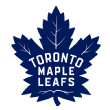
11. Toronto Maple Leafs
Overall score: 80.2
Why they're here: The window to win is wide open right now for the Maple Leafs. GM Kyle Dubas stacked his roster with offensive sizzle, a capable goaltender in Frederik Anderson, and even improved the weak-link defense this summer with the addition of Tyson Barrie. The cost for all of this? Cap hell right now -- and for the foreseeable future. -- Kaplan
Points of concern: There was a nagging sense last season that the Maple Leafs, despite a star-studded collection of young talent, might have a short window to win with this group, making that playoff loss to Boston all the more debilitating. That is reflected in these ratings: The Leafs' cap is top-heavy, particularly after the new deal for Mitch Marner. And while having every defenseman not named Morgan Rielly up for a contract next summer might seem like the apex of flexibility, it's also a prime example of the uncertainty facing GM Kyle Dubas as he colors around the massively compensated top three forwards. -- Wyshynski
Cornerstone prospects: Rasmus Sandin looks like the prospect that could be a big help to the Leafs within the next few years. He's a steady, heady defenseman who really excelled in his first AHL season and only got better as the campaign wore on. Beyond him, the Leafs could have found a second-round gem in Nick Robertson, who has skill and tenacity, while 2018 first-rounder Timothy Liljegren still has a chance to develop into a more well-rounded defenseman. The Leafs are going to need guys on entry-level deals to help them in their pending cap crunch, but I don't think there are a ton of huge-impact guys who haven't already made the jump to the NHL beyond those listed. -- Peters

12. Philadelphia Flyers
Overall score: 77.7
Why they're here: The Flyers were patient for so many years with their farm system, and that sets them up well for the next few years. Philadelphia is also rejoicing because it appears they finally have an answer to their decades-long search for a franchise goaltender: Carter Hart is only 21. -- Kaplan
Points of concern: The Flyers have a couple of contractual headaches on the books in Jakub Voracek, who makes $8.25 million against the cap through 2024, while they're spending a combined $14 million-plus annually on Kevin Hayes and James van Riemsdyk. Philly has an impressive collection of prospects thanks to the previous regime; is Chuck Fletcher up to the task molding them and the veterans on the roster into a Stanley Cup contender? -- Wyshynski
Cornerstone prospects: The Flyers always seem to have a surplus of NHL-ready players in their system. The best ones at this point look like Joel Farabee and Morgan Frost, both of whom have been stars at lower levels but might have to be role players for a bit before they can earn their way into more featured positions. Defenseman Cam York has top-four potential and is a transition dynamo, which bodes well for where the game is headed. Additionally, after graduating Carter Hart to the NHL last season, the Flyers still have some depth in goal after a breakout season from young Samuel Ersson in Sweden. -- Peters
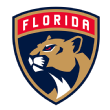
13. Florida Panthers
Overall score: 77.7
Why they're here: Florida ponied up for Joel Queneville and a No. 1 goaltender this offseason. Sergei Bobrovsky should help the team graduate from the perpetual playoff bubble, but his contract -- $10 million a year through 2026, with no-movement clauses -- is not going to age well. There is good faith in the current roster, which is unheralded but talented, including a budding superstar in Aleksander Barkov. -- Kaplan
Points of concern: We all hopped on the hype train for the Panthers last season and then saw it derailed, so that's reflected in these ratings. Apparently, the addition of Joel Quenneville didn't provide the kind of confidence that the next three seasons will be automatically prosperous for the Panthers. And apparently, contracts like those for Sergei Bobrovsky and Aaron Ekblad were enough to counterbalance the gems on the Panthers' cap, like getting Aleksander Barkov for $5.9 million in average annual value through 2022. -- Wyshynski
Cornerstone prospects: The Panthers have some potential future core players in their prospect pool, mostly at forward. Grigori Denisenko is a dynamic talent, Owen Tippett a strong goal scorer and then there's goalie Spencer Knight, whose skill set has even the most conservative of goalie projectors looking at him as an easy long-term No. 1. If there's one area in which this team lacks high-end talent beneath the NHL, it's defense. But I think a lot of teams would gladly take a number of the forwards they have waiting in the wings. -- Peters
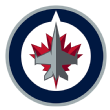
14. Winnipeg Jets
Overall score: 77.4
Why they're here: The Jets were the toast of the NHL just a year ago. But after an off season, expectations have been readjusted (and there's not a great prospect system to fall back on). The Jets still have a potent offense, but the defense has worsened because of cap casualties. And that stormy cap forecast isn't clearing up anytime soon. -- Kaplan
Points of concern: Despite some losses to their blue line, and a general sense that the team is sliding in the wrong direction in a very competitive conference, Winnipeg remains an above-average team with a solid managerial and ownership group. The problem, then, is the future: graduates Patrik Laine and Kyle Connor aside, the Jets' pool of young talent ranks near the bottom of the NHL. The silver lining is that the team has shown it can build from within. -- Wyshynski
Cornerstone prospects: The Jets have done such a good job in the draft that most of the players who are going to make an impact for them are already on the NHL roster. They just don't miss much in the first round. Big winger Kristian Vesalainen is probably next in line to fill an impact role, and now that the team needs some help on defense, 2019 first-rounder Ville Heinola is going to get a great chance to be an impact player. The Jets have mostly what they need to contend on their NHL roster and they're all young enough, but getting Vesalainen and Heinola to be big-time players would be icing on the cake. -- Peters
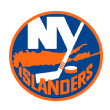
15. New York Islanders
Overall score: 77.3
Why they're here: It felt like the 2018-19 Islanders were a hodge-podge group put together without a larger plan, but they ended up being one of the NHL's biggest success stories. That's why you should always have faith in Lou Lamoriello. There's still some uncertainty about this team's long-term identity, but they've crushed it in recent drafts. -- Kaplan
Points of concern: The Islanders' biggest concern is Mathew Barzal's contract as he hits restricted free agency in 2020, in the sense that every team with an RFA is concerned after the Summer of Stalemates in 2019. Does he sign an eight-year franchise deal, or does he fall in line with players like Auston Matthews for a shorter term? Beyond that, the Islanders have a lot of key players locked up at a reasonable cost for the next three seasons -- 13 are still under contract in 2021-22. The team's prospect pool is middle of the road, with some sink-or-swim talents like Ilya Sorokin and Oliver Wahlstrom. -- Wyshynski
Cornerstone prospects: The Isles have some quite intriguing prospects, but their cornerstone looks like defenseman Noah Dobson. He has all of the makings of a strong No. 1 defenseman, including the size, the defensive capabilities and improved offensive skill. That's one thing the Isles desperately needed to add to help build around Mathew Barzal, and Dobson is going to help substantially. The team should maintain higher expectations for Oliver Wahlstrom and a number of skilled players in their system at forward. -- Peters
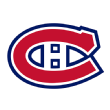
16. Montreal Canadiens
Overall score: 77.2
Why they're here: The Canadiens have an elite goaltender in Carey Price, who gives them a chance to win right now. Unfortunately, the team in front of him isn't quite as talented. But this roster isn't in terrible shape, and neither is Montreal's cap situation. GM Marc Bergevin has improved his reputation recently with solid drafts and decent trades (Alex Galchenyuk-for-Max Domi perhaps being his best). -- Kaplan
Points of concern: The Canadiens are a team that should steadily climb in the next three years thanks to some solid young prospects, but our experts aren't so certain about the immediate future. The biggest issue facing the Canadiens is the fact they have over $18 million committed to a 32-year-old goalie and a 34-year-old defenseman through 2026, with Carey Price having full trade protection. As you can see by the ratings, there isn't much confidence in GM Marc Bergevin to quickly construct a contender around those assets. But he and the front office have done a stellar job loading up the generation behind them. -- Wyshynski
Cornerstone prospects: The Habs have been spending a lot of resources on improving their prospect system, and does it ever look strong right now. Cole Caufield is undersized, but he's one of the very best goal scorers outside of the NHL and could be a core player for this team. The same can be said for Nick Suzuki, who is likely a wing at the next level but has been one of the top scorers in the OHL over the past two seasons. Ryan Poehling also looks like a potential long-term center for this club. With Jesperi Kotkaniemi impressing as a rookie in 2018-19, the Habs are starting to look like a team that's going to be a lot better in the next few years. -- Peters
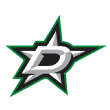
17. Dallas Stars
Overall score: 76.5
Why they're here: The Stars have struck out on a few recent drafts -- especially with their first-round picks -- and that has set them back. After luring Joe Pavelski to Dallas, the Stars can definitely win now. Jamie Benn's contract ($9.5 million for the next six seasons) could prove troublesome later on. Dallas' defense is young, talented, and in great shape. -- Kaplan
Points of concern: With outstanding goaltending and some high-end scoring talent (including the newly acquired Joe Pavelski), the Stars are a team for today. Tomorrow? Eh, not so much, with a lowly prospect pool that lacks any breakout prospects. But let's also consider that Miro Heiskanen just graduated from the system, is 20 years old and is as high-end a young defensemen as you'll find. -- Wyshynski
Cornerstone prospects: The Stars don't have an especially high-end system, but Ty Dellandrea is the kind of center who could make an impact in so many different ways for them over the course of his career. They have so much talent at the NHL level right now that it's going to be difficult for this system to replace that when those guys start tailing off. Defenseman Thomas Harley, however, is an intriguing player, as he has exceptional offensive skills and could bring a new dynamic to their blue line one day. -- Peters
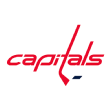
18. Washington Capitals
Overall score: 76.4
Why they're here: Just when we thought Alex Ovechkin was slowing down, he wins his first Stanley Cup then follows it up with a 51-goal season. This team is strained by the cap, and the prospect pool is depleted. Big contract decisions loom for mainstays like Nicklas Backstrom and Braden Holtby; both are UFAs this summer. -- Kaplan
Points of concern: Since 2008, the Capitals have had Alex Ovechkin under his current contract. Since 2010, they've had Nicklas Backstrom under his current contract. So the next three years should be fascinating: Ovechkin is up in 2021, and Backstrom is up next summer, as is goalie Braden Holtby. The Capitals have a veteran core -- Holtby and blueliner John Carlson turn 30 this season -- and a farm system that doesn't have any true impact players, depending on your thoughts of Ilya Samsonov. Not counting Ovechkin, Backstrom and Holtby, they have 13 players under contract through 2022, and all of them will be over 30 by then. -- Wyshynski
Cornerstone prospects: The Caps don't have a ton of exceptional players in their system, but they do have a potential No. 1 goalie in Ilya Samsonov, who has only been in North America for one season. Samsonov was one of those rare first-round goalies, and he played exceptionally well in Russia, but he was up and down in his first AHL season. The question for him is going to be how long Braden Holtby blocks his way to the net, if he develops into the No. 1 many believed he could be. Aside from Samsonov, the Caps have some potential NHL role players with a chance to grow into something more in defensemen Alexander Alexeyev and Martin Fehevary. Recent draftees Connor McMichael and Brett Leason also add some much-needed skill and speed to their forward system. -- Peters

19. Chicago Blackhawks
Overall score: 76.0
Why they're here: The Blackhawks are trying to rebuild on the fly. GM Stan Bowman has done some good maneuvering of late, which has inspired confidence. Chicago also has a great prospect system, but many of those young players can't crack the roster because they're being blocked by veterans. -- Kaplan
Points of concern: How the mighty have fallen. The Blackhawks topped our future power rankings in 2014, with the kicker being that "the Blackhawks may be the best team in the game right now, and they're not going away." Well, they won the Stanley Cup that season -- and then they sort of went away, losing the first round the next two seasons and then failing to qualify for the playoffs from 2017-19. But as GM Stan Bowman has proven throughout his tenure with Chicago, there's always a path back to contention. In the Blackhawks' case, it's the hope that their prospect pool (ranked No. 9) and their thrifty player acquisitions can build out a roster that's saddled with some highly paid players, as well as one of the most lamentable contracts in the NHL; Brent Seabrook isn't just on the cap for the next three seasons that our rankings cover, but then two more after that. -- Wyshynski
Cornerstone prospects: Heading into this offseason, the Blackhawks really needed an elite forward for their system, and No. 3 pick Kirby Dach appears to fit the bill. When he's at his best, he's a remarkable playmaker who can dissect opposing defenses. He just needs to be more consistent to become the heir to Jonathan Toews as the team's next No. 1 center. Chicago also has a quartet of highly promising defense prospects led by Adam Boqvist, who would add a dynamic to the Blackhawks' blue line that they haven't really had in a while. -- Peters

20. Columbus Blue Jackets
Overall score: 75.9
Why they're here: The Blue Jackets mortgaged a good chunk of their future to capitalize on a great chance to win last year. While they're a bit bare in the draft department (they didn't pick until the fourth round last year and have no second-round picks over the next two years), they do have a decent core. Seth Jones and Zach Werenski are both under 24, and will be the foundation of their blue line for years to come. -- Kaplan
Points of concern: The Jackets are reeling after losing Artemi Panarin off their top line and Sergei Bobrovsky from the crease, where he won the Vezina Trophy twice. But they shot their shot last season -- which was smart, considering their farm system lacks bona fide Grade-A prospects. Obviously there are things to build on here -- Seth Jones, Zach Werenski and Pierre-Luc Dubois are all south of 25 -- but the time to win was last spring. -- Wyshynski
Cornerstone prospects: The Blue Jackets don't have a true game-breaker in their system, but they have a number of prospects who have a chance to be big-time contributors. Alexandre Texier and Emil Bemstrom have potential to make an impact, while the team also boasts depth in the goaltending department. The team has hopes that one of Elvis Merzlikins, Daniil Tarasov or Veini Vehvliainen can turn into the team's long-term No. 1 in net; it's just not clear if any of them can do that until they play more in North America. -- Peters

21. Pittsburgh Penguins
Overall score: 75.2
Why they're here: Sidney Crosby is on his extremely team-friendly deal through 2025 -- with a cap hit of just $8.7 million -- and that helps. But this team is still strained against the cap. GM Jim Rutherford acts on conviction, and he's forever tweaking this roster. Unfortunately, top prospects and early-round picks have been the biggest casualty. -- Kaplan
Points of concern: The price of winning back-to-back Stanley Cups earlier this decade is a farm system that's been ranked near the bottom of the league by pipeline pundits for multiple seasons. The other price is desperately trying to fill in the blanks around a veteran core while the window to win (in theory) remains open, which sometimes means you get contracts for Brandon Tanev and Jack Johnson that run through 2023 (and in Tanev's case, beyond). -- Wyshynski
Cornerstone prospects: There's not a lot here. The Pens have not had many first-round draft picks, or many picks at all, in recent seasons. Unsurprisingly, that's prevented them building anything of substance. There are players with potential like Calen Addison, Filip Hallander, Samuel Poulin and Nathan Legare, among others, but most of the guys in their system project as complementary players at best. -- Peters

22. Anaheim Ducks
Overall score: 74.9
Why they're here: The Ducks have had sustained success over the last decade, but their roster got old. GM Bob Murray is not beholden to nostalgia. He split up the Big Three (buying out Corey Perry) and seems ready to rebuild. Luckily, they've been competent in drafting and have a decent prospect pool. -- Kaplan
Points of concern: The present gets a 'meh' from our panel, as Ryan Getzlaf is a year older, Ryan Kesler's contract still lingers and GM Bob Murray hasn't exactly earned the confidence of our panelists. But the future is quite bright, with a top-10 prospect pool in our rankings. -- Wyshynski
Cornerstone prospects: The Ducks have a solid core of prospects who should be filtering into their NHL lineup fairly consistently over the next few seasons. Trevor Zegras, drafted ninth overall in 2019, is at the heart of the system as a highly skilled, quick center. He's headed to Boston University this season, but could help in the near future. Until he's ready, Anaheim has a number of promising young forwards - some of whom were rookies just last season like Troy Terry and Max Jones, with others like Sam Steel, Brendan Guhle and Isac Lundestrom waiting in the wings with potential to make a substantial impact at the NHL level within the next few seasons. -- Peters
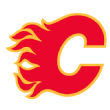
23. Calgary Flames
Overall score: 74.0
Why they're here: The Flames were a wagon in the West last season, and should be poised to stay atop as long as goaltending holds up. However, the long-term prospects look murky right now as the team has dealt away a ton of draft picks in recent years to stay competitive. While the 2019-20 team will be excellent, there aren't any top prospects knocking on the door. -- Kaplan
Points of concern: The perils of a team trying to win the Stanley Cup in the short term: a prospect pool that's basically a puddle in a concrete basin. They do have all of their draft choices save for a fourth-rounder this season, so perhaps they can start filling it back up again. But outside of some concern about coach Bill Peters and GM Brad Treliving, that's the Flames' top worry. -- Wyshynski
Cornerstone prospects: The Flames have very little beneath the NHL level at this point. Jusso Valimaki and Dillon Dube still qualify as prospects, but neither appears to be a game-breaker. The Flames will be able to address depth positions with some of their more recent selections, but there are so few sure things in one of the league's shallowest prospect pools. -- Peters
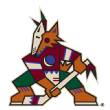
24. Arizona Coyotes
Overall score: 73.6
Why they're here: John Chayka has always been a transaction-happy GM, and his big offseason splash was acquiring Phil Kessel, who should help the team win right now. But the Yotes also have some talented young players locked in for the next few years on reasonable contracts (Nick Schmaltz, Christain Dvorak and Jacob Chyrchun are all under 23 and signed through at least 2025). -- Kaplan
Points of concern: GM John Chayka is the biggest concern going forward. The Coyotes have a decent prospect pool that could become quite good depending on how some of them develop. But the erstwhile wunderkind general manager has constructed a roster that's slightly above average, with some long-term contracts doled out to players like Nick Schmaltz and Jakob Chychrun before they might have earned them. -- Wyshynski
Cornerstone prospects: The Coyotes could be calling on their cornerstone prospect as early as this season. Barrett Hayton has the potential to be Arizona's long-term No. 1 center. With his skill level and hockey sense, Hayton could be one of the core forwards on this team as it looks to be more competitive in the near future. Defenseman Victor Soderstrom, selected in the first round in 2019, is a tier bellow Hayton, but has the upside to be a top-four stalwart within the next few seasons. -- Peters
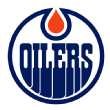
25. Edmonton Oilers
Overall score: 73.6
Why they're here: The problem with the Oilers is that they have the best player in the world and can't surround him with enough talent to win. As long as Connor McDavid is around, the Oilers have a chance. They've whiffed on quite a few draft picks, which has set them back. -- Kaplan
Points of concern: The good news is that the Oilers have something no other team on the planet has: Connor McDavid. The bad news is that, currently, they don't have much else and are middle of the road in prospects. The biggest concern here is whether GM Ken Holland, who built an incredible championship era in Detroit, is the right guy to untangle the mess in Edmonton; and whether coach Dave Tippett can find ways to paper over some of those deficiencies as he did with the Coyotes for years. -- Wyshynski
Cornerstone prospects: Defense is the position of strength in the Oilers' system. Both Evan Bouchard and Philip Broberg have the potential to be significant contributors at the NHL level. Both look like potential power-play options in the near future, which is an area that should be a lot better for Edmonton than it has been. This system has a lot of question marks, but improved AHL development will help this team over the next few seasons. -- Peters
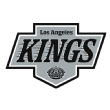
26. Los Angeles Kings
Overall score: 73.0
Why they're here: The short-term prospects for the Kings look bleak. This is a team weighed down by aged, bloated contracts. The future is a bit rosier. The Kings have built an excellent prospect system -- and could have a stud on their hands, with 2019 first-rounder Alex Turcotte -- for whenever they're ready to truly go for it. -- Kaplan
Points of concern: Having a roster with seven key players all over the age of 32 is certainly a choice. The Kings have a small army of reinforcements behind their aged core, but the current roster is a lot like owner Philip Anschutz: "experienced," accomplished and very, very well compensated. GM Rob Blake and his team have done a good job building for the future, but not enough to shake concerns from our panelists. -- Wyshynski
Cornerstone prospects: One of the deepest prospect systems in the entire NHL. The Kings' pool is led by Alex Turcotte, who may one day be able to take the reins from Anze Kopitar as the team's top center. Another important thing about the Kings' system is that they're getting faster. In particular, Turcotte and 2018 first-rounder Rasmus Kupari have a lot of speed. The Kings' defense prospects, especially Tobias Bjornfot and Kale Clague, can really move the puck and improve the transition game. The Kings are building especially well, and Turcotte is an enviable centerpiece. -- Peters

27. Detroit Red Wings
Overall score: 71.6
Why they're here: When the Red Wings' dynastic run fizzled out, all that was left was the memories and bloated contracts. OK, it wasn't that dire. But the rebuild has been slow, as Detroit waits for unfavorable contracts to get off the books. Now that Steve Yzerman is in charge, there's hope that the path back to winning can be expedited. -- Kaplan
Points of concern: The Red Wings deserve credit in rebuilding their prospect pool, only in the sense that they've taken it from "none" to "Filip Zadina." It remains an average group, despite three straight non-playoff seasons. The Wings have regrettable contracts from a bygone era of quasi-contention, like Justin Abdelkader's still-baffling deal that offers him full trade protection through 2023. One bit of intrigue: All the restricted free agents that the Red Wings have next summer, a group of young players assembled while GM Steve Yzerman was building the Lightning: What becomes of them? -- Wyshynski
Cornerstone prospects: Even though Filip Zadina underwhelmed last season, I think he still has the ability to be a game-breaking player and a long-term top-six winger for the team. Joseph Veleno might be the Swiss army knife who does a little bit of everything, and now we're going to have to see what recent first-rounder Moritz Seider brings to the table. That trio gives the Red Wings a decent core of young prospects who could eventually fill significant roles. -- Peters
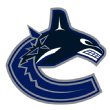
28. Vancouver Canucks
Overall score: 71.5
Why they're here: This front office has made some head-scratching decisions, but they're sticking around thanks to GM Jim Benning signing a three-year extension this summer. At least they've had some big hits in the draft, first with Brock Boeser, then with Elias Pettersson, then with Quin Hughes, changing the complexion of the franchise. -- Kaplan
Points of concern: GM Jim Benning has a plan. So far, it's involved investing money in veteran free-agent acquisitions like Tyler Myers, Antoine Roussel and Jay Beagle who haven't helped turn to the Canucks into a contender but have inexplicably created a salary cap situation that affected their ability to sign a player like Brock Boeser in a timely fashion. Isn't the cap crisis supposed to happen after a team's young core coalesces into a contender? -- Wyshynski
Cornerstone prospects: The Canucks have a blue-chip defenseman in Quinn Hughes, and he's the centerpiece of a pretty solid prospect system. Hughes has a chance to make an impact right away and carry this team into the future as a dynamic, puck-moving defenseman. Meanwhile, the team will be waiting on 2019 draftee Vasili Podkolzin to play out his KHL contract, but he's another potential core guy in the future to skate with the likes of Bo Horvat, Elias Pettersson and Brock Boeser. Vancouver also has a quality goalie prospect in Thatcher Demko; they've been waiting on him to take that next step, but he appears close. -- Peters
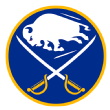
29. Buffalo Sabres
Overall score: 70.5
Why they're here: The Sabres have a true No. 1 center in Jack Eichel, but have struggled to surround him with a competitive team. GM Jason Botteril might have seller's remorse after the Ryan O'Reilly trade last year, but overall, he has made some shrewd moves and signings to get this team on track. The culture is poised to change with Ralph Krueger as coach. -- Kaplan
Points of concern: Are we calling for a vote of "no confidence" in Sabres general manager Jason Botterill? That seems to be the case when it comes to these ratings, which have Buffalo ranked below average for its management team and, potentially, ownership. That's understandable when the team had multiple seasons to improve and still looks like a misshapen also-ran -- even if we're intrigued to see what new coach Ralph Krueger does with it. But with over $35 million in cap space next summer, apparently there's little faith the Sabres will know what to do with it. -- Wyshynski
Cornerstone prospects: The Sabres have had the benefit of high draft picks and already have their cornerstone players on the NHL roster in Rasmus Dahlin and Jack Eichel. But the team still has a high-profile prospect in recent draftee Dylan Cozens, who can potentially be the long-term No. 2 center behind Eichel if he reaches his ceiling. The Sabres may also be able to address their goaltending in a longer-term way with the emergence of Ukko-Pekka Luukkonen as one of the very best goaltending prospects in the game. There's more work to be done for the Sabres beneath the NHL level to substantially support their ongoing rebuild, but there are pieces there that should help in the near term. -- Peters

30. Minnesota Wild
Overall score: 67.3
Why they're here: Minnesota's roster flexibility is tied up by big contracts. This is an old team that's having a hard time getting younger. Ownership owned up to a mistake and cut ties with GM Paul Fenton before he could inflict more damage. Bill Guerin comes in with a good reputation as an assistant GM in Pittsburgh, but we don't know how he'll fare in this role. -- Kaplan
Points of concern: It's hard not to separate the chaotic summer the Wild had from their placement in these rankings, what with the team quickly dispensing with GM Paul Fenton after one season in favor of promising (but inexperienced in the big chair) GM Bill Guerin. But beyond that, the Wild have a roster saddled with those immovable Zach Parise and Ryan Suter contracts, one for Mats Zuccarello that doesn't make sense given where the team is, and a prospect pool that's unimpressive save for KHL star Kirill Kaprizov -- and who knows when he'll make the leap to the NHL. -- Wyshynski
Cornerstone prospects: The Wild's prospect system is especially shallow. What it does have, however, is two potential game-breaking forwards who could produce at a high level in the NHL. Kirill Kaprizov has been one of the KHL's best goal scorers for the past two seasons despite being a relatively young player (he's 22). Meanwhile, Matthew Boldy is a highly skilled, two-way winger with size. When you throw those guys into a mix -- and it's still an "if" at this point with Kaprizov, who remains under KHL contract -- there's a little more room for optimism for a team that registers pretty low on the future watch list. -- Peters
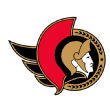
31. Ottawa Senators
Overall score: 63.3
Why they're here: Let's start with the bright side: The Senators have some young players to be excited about -- Brady Tkachuk, Thomas Chabot -- and a solid prospect farm. Now for the rest: The drama-plagued Senators are in the middle of a painful rebuild, and there's no clear end in sight. Fans have very little faith in the current management regime, and the 2019-20 team is seriously devoid of talent. -- Kaplan
Points of concern: The Senators have by far the NHL's weakest roster in the present, which is by design: This is a rebuilding franchise, with a solid prospect base on which to build (and, they hope, an odds-on chance to draft Alexis Lafrenière next June). But every hope for the future, including over $48 million in available cap space next summer, is undercut by off-ice frustrations like the franchise's arena situation and the fact that their owner, Eugene Melnyk, is perhaps the most reviled by his fan base in the NHL. It's one thing to have money to spend; it's another to have an owner who will actually spend it, and to find players willing to accept it. -- Wyshynski
Cornerstone prospects: The Sens' system is going to get a workout in the next several years. Their core group is led by defenseman Erik Brannstrom, who won't reach Erik Kalrsson levels, but will be the de facto long-term replacement. Drake Batherson has been a rising prospect in the system, and looks like a long-term impact player as well. Beyond that, the Sens have a lot of bodies that could filter into various roles, with a chance to grow into greater impact players down the line. -- Peters
